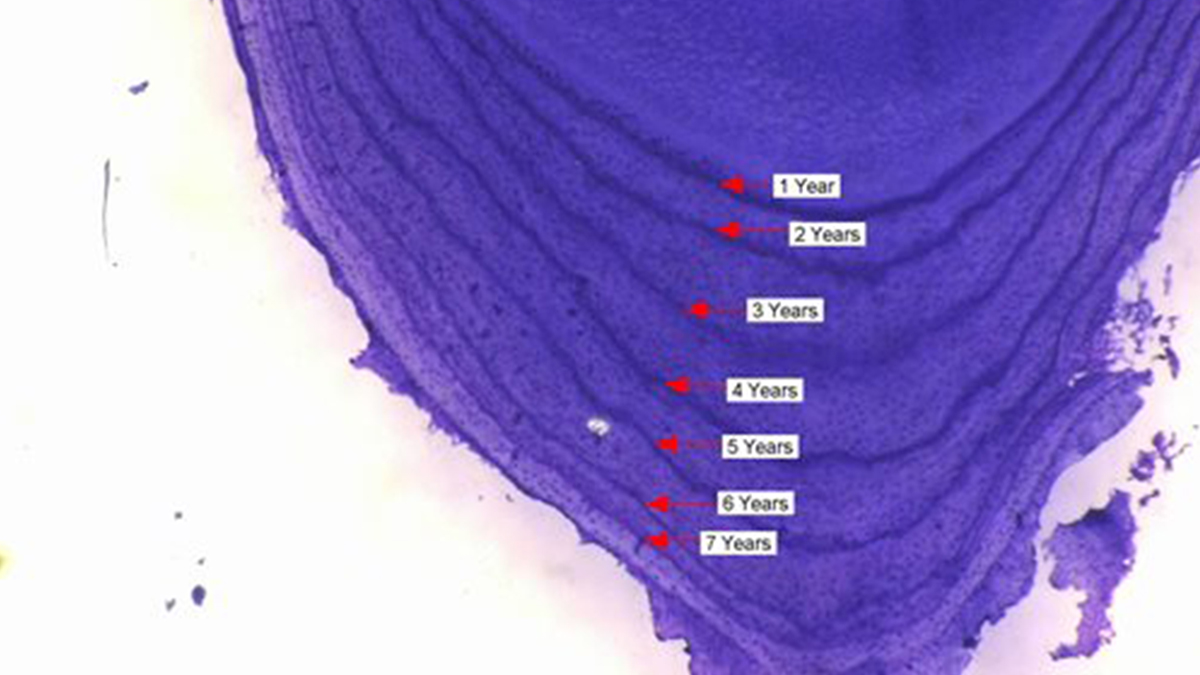Below is a news release from the Wyoming Game and Fish Department.
One little tooth tells biologists a lot about wildlife. The Wyoming Game and Fish Department is asking select hunters statewide to donate teeth from their harvested mule deer, white-tailed deer, elk, pronghorn, moose, bison, bighorn sheep, mountain lions, black bears and bobcats. Wildlife managers can learn the ages of harvested animals from teeth, and that information is important for managing wildlife.
“Teeth are one source of important data collected from hunters that help wildlife managers assess how hunting seasons affect the population and the demographics of herds,” said Molly Bredehoft, tooth aging coordinator for Game and Fish.
Wildlife managers pre-determine hunt areas that will be analyzed each year for certain species. In these areas, local Game and Fish personnel focus sampling efforts by collecting teeth at check stations or request teeth from hunters who receive mailed tooth boxes. Hunters with a license for one of these areas are chosen randomly using the license database, and only a selected few will receive a tooth box.
Those who provide teeth must call or email to retrieve results this year; have your license number ready. Hunters can contact:
Molly Bredehoft, tooth aging coordinator – (307) 721-1926 or [email protected]
Kim Frazier, laboratory director – (307) 721-1922 or [email protected]
Results will be ready in mid-February for mule deer, white-tailed deer and moose and March for elk. Bison ages are posted mid-April. Other species are available later in the year.
Hunters who do not receive a tooth box can get their harvest aged for a fee of $25-$30 per animal, depending on the species. Contact the tooth aging coordinator for additional information.
Certain teeth are preferred for aging for different species. Game and Fish needs both first incisors for mule deer, white-tailed deer, elk, moose, bison and other ungulate species. To help, Game and Fish has instructions that show how to pull teeth. Mountain lions and black bears are aged using the premolars; canines are aged from bobcats. For proper tooth extraction, it is suggested to have Game and Fish personnel extract teeth from mountain lions and black bears.
Teeth are analyzed at the Game and Fish Wildlife Forensic and Fish Health Laboratory using a technique called cementum annuli analysis tooth-aging. The annuli are deposited in layers in the root of an animal’s tooth each winter and are counted to help determine the age of the animal. This method is similar to counting rings on a tree.
“We count the annuli but also take into consideration when the permanent tooth grew in to determine a final age,” Bredehoft said.
The lab sees some impressive ages harvested from teeth. Bredehoft reports in 2019 the lab aged a cow elk that was 20.5 years old from Hunt Area 110. Two spring black bears stood out, too, at 22.3 years old from Hunt Areas 29 and 25.
In addition to teeth collected annually from hunter harvests, teeth are also collected by Game and Fish personnel from wildlife captured for research projects and relocations, as well as, winter mortalities and road killed animals. Once compiled, the data are part of the Game and Fish’s Annual Job Completion Reports that details information about the herds in the state. Wildlife managers use this data to analyze age classes to make sound management decisions and to provide information about population dynamics.
In 2019, the lab analyzed close to 4,000 total teeth processed from ten different species in Wyoming.
(Photo source: Wyoming Game and Fish Department)
